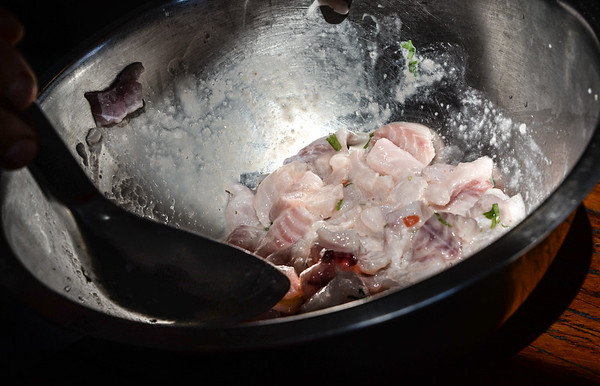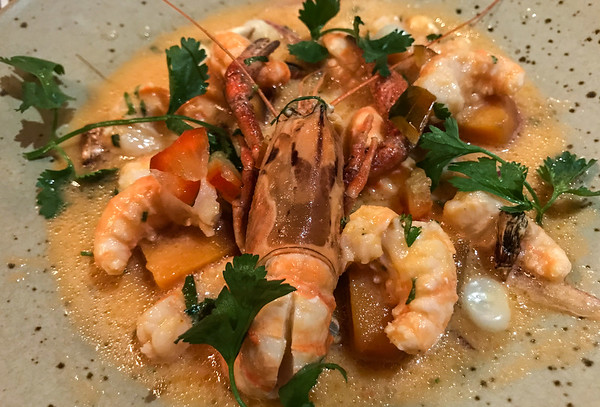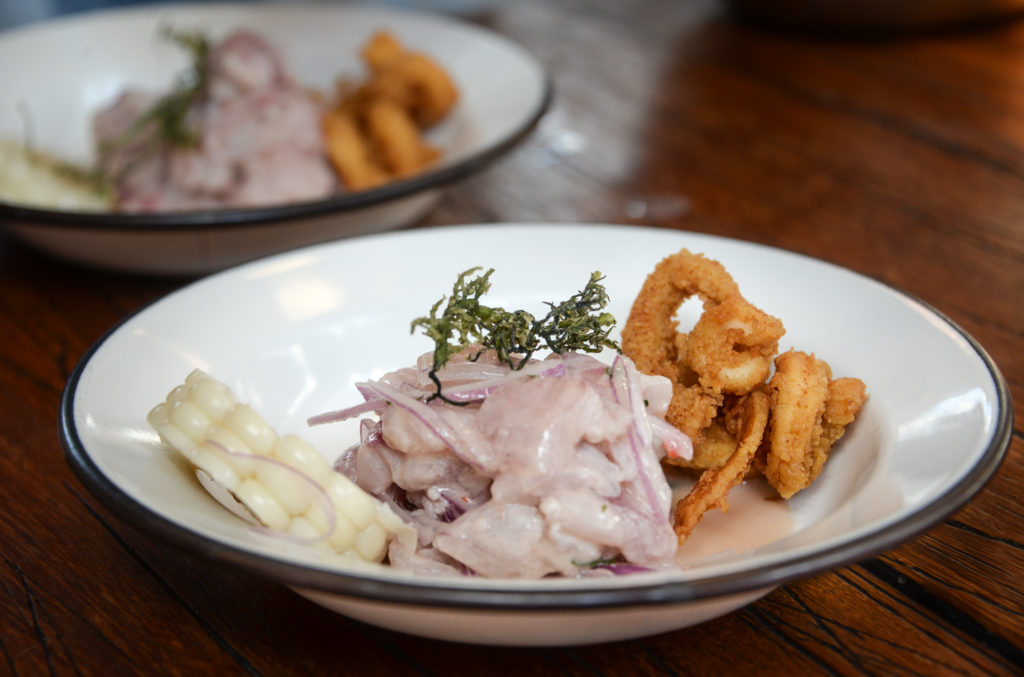The national dish of Peru
I love learning how to make a local speciality the right way. On a recent trip to Peru that specialty was ceviche. Considered the national dish of Peru, ceviche, or cebiche as it’s sometimes spelled, got its start during the Inca Empire. During that time Peruvian cooks along the coast would marinate freshly caught fish in the Andean corn alcohol chicha. After the Spanish conquest of the 16th century they began to incorporate European ingredients into their cooking. This included adding citrus to their seafood.

Mixing the ingredients
Although it began as a coastal dish, ceviche is found throughout Peru. Inland, where rivers and lakes are common, cooks use Peruvian trout (truncha) and prawns (camarones). In the capital Lima sea bass, corvina drum and other semi-firm to firm white-fleshed fish are featured.

Camarones cebiche garnished with corn and cilantro at Chicha in Arequipa, Peru
What does it take to make an outstanding ceviche?
Obviously, in a dish that features raw seafood, you should have very fresh, clean tasting fish. The fish itself should be semi-firm to firm in texture; you don’t want your fish falling apart before the first bite.
You also don’t want rubbery or mushy, overcooked fish. To avoid this, chefs toss the raw fish in lime juice minutes before serving. This may not sound like a very long time to macerate raw food. Keep in mind, though, that fresh, high quality, thinly sliced seafood is used and that marinating times are based upon the thickness and firmness of the fish. Still unconvinced? This Washington Post article does a nice job explaining the use of acids on raw seafood.
Other ingredients
Generally, cooks in Peru use the juice of one lime or lemon per serving. Since Peruvian limes are much larger than in the U.S., I bump up the number to three limes. To balance out the acidity and amp up the flavor, include minced chilis, sliced red onion and herbs. Diced potatoes and nuts are also popular additions.
TROUT CEVICHE
Serves 4
1 sweet potato, peeled and diced
1 small red onion, halved and thinly sliced
1 medium red chili, seeded and minced
1-inch piece of fresh ginger, grated
1 pound skinless rainbow trout fillets, very thinly sliced and chilled
1 teaspoon sea salt, plus more to taste
Juice of 12 limes
Handful of cilantro, roughly chopped
Bring a large saucepan filled with salted water to a boil. Add the diced sweet potatoes, reduce the temperature to low and cook the potatoes until just tender, 3 to 5 minutes. Drain the water from the potatoes and set aside.
Soak the sliced onions in warm water for 5 minutes; this will reduce their potency. Drain and pat the onions dry.
In a large bowl toss together the onions, chili and ginger. Add the trout and salt and then pour the lime juice over the fish. Allow the ingredients to sit for 3 to 4 minutes before adding the diced potatoes. Gently turn over the ingredients, taste and add more salt if needed.
Place equal amounts of ceviche in 4 bowls. Sprinkle cilantro over the top of each and serve immediately

2 Comments